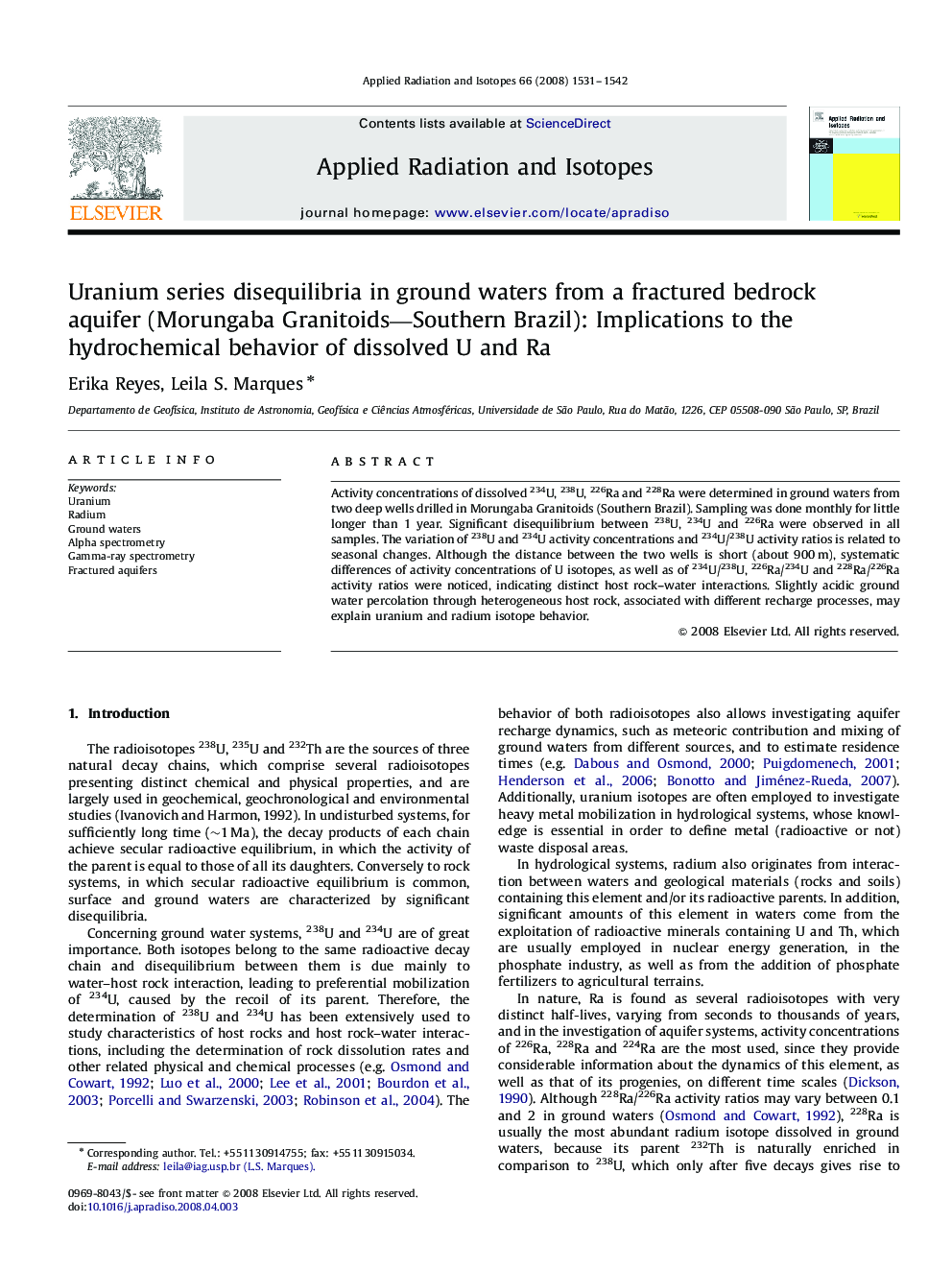| Article ID | Journal | Published Year | Pages | File Type |
|---|---|---|---|---|
| 1877013 | Applied Radiation and Isotopes | 2008 | 12 Pages |
Abstract
Activity concentrations of dissolved 234U, 238U, 226Ra and 228Ra were determined in ground waters from two deep wells drilled in Morungaba Granitoids (Southern Brazil). Sampling was done monthly for little longer than 1 year. Significant disequilibrium between 238U, 234U and 226Ra were observed in all samples. The variation of 238U and 234U activity concentrations and 234U/238U activity ratios is related to seasonal changes. Although the distance between the two wells is short (about 900Â m), systematic differences of activity concentrations of U isotopes, as well as of 234U/238U, 226Ra/234U and 228Ra/226Ra activity ratios were noticed, indicating distinct host rock-water interactions. Slightly acidic ground water percolation through heterogeneous host rock, associated with different recharge processes, may explain uranium and radium isotope behavior.
Related Topics
Physical Sciences and Engineering
Physics and Astronomy
Radiation
Authors
Erika Reyes, Leila S. Marques,
